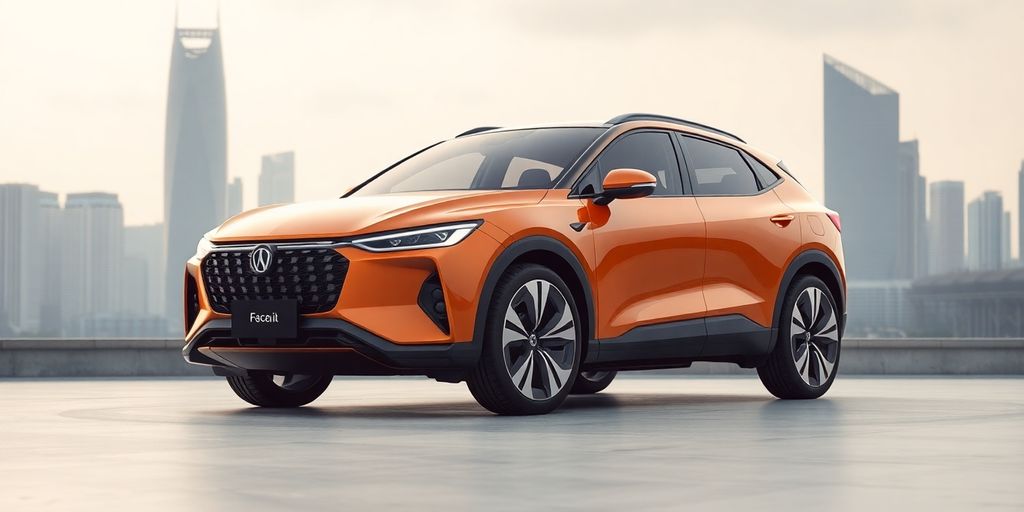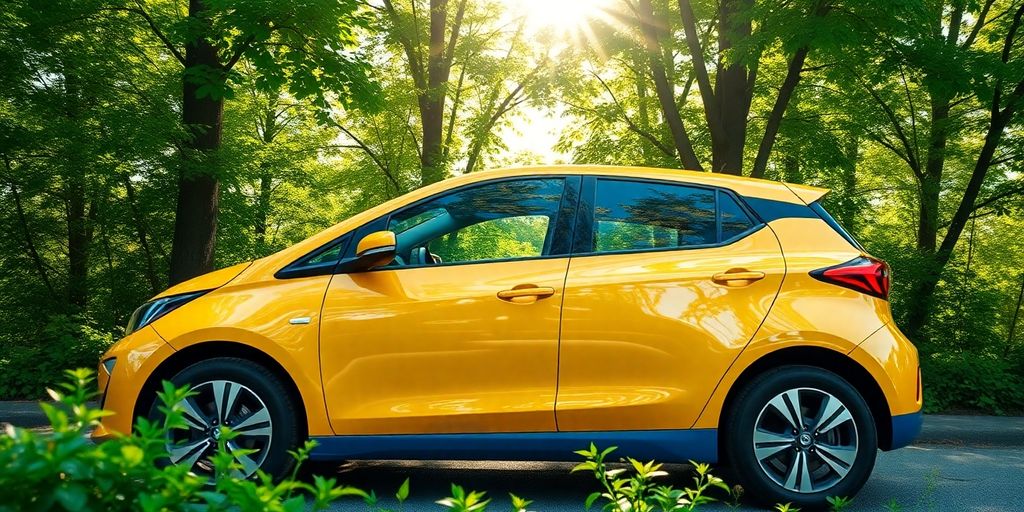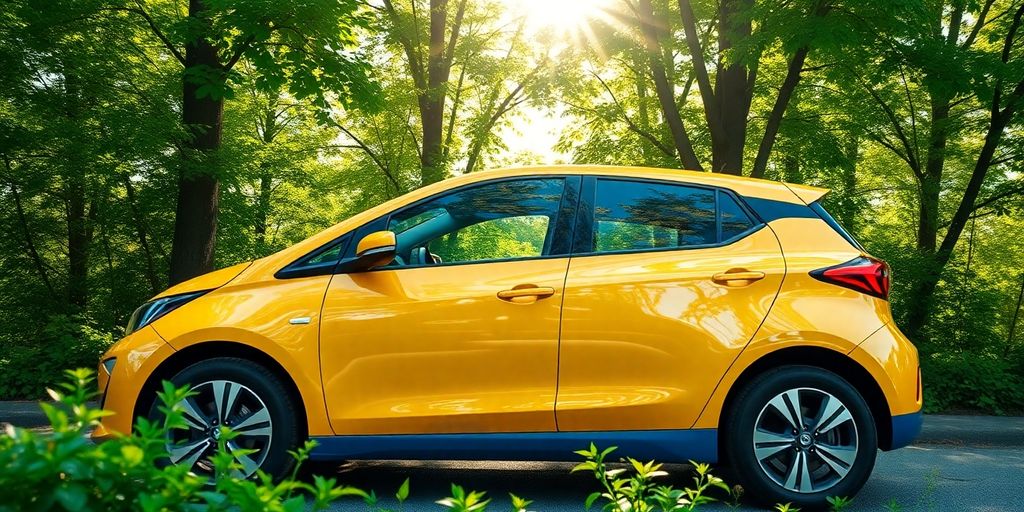The Rise of CHINESE Cars of 2025: Innovations and Market Trends

Chinese cars in 2025 are making waves with new tech and designs. They’re not just about getting from A to B anymore. These cars are packed with electric and smart driving features, making them stand out on the global stage. Plus, they’re looking pretty sleek too. As they push into international markets, the impact is huge. Let’s dive into what’s driving this change and what it means for the future.
Key Takeaways
- Electric cars from China are leading the way with new tech.
- AI and smart features are becoming standard in Chinese vehicles.
- Sustainability is a big focus, with eco-friendly production methods.
- Chinese car designs are getting more stylish and customizable.
- The global market is feeling the impact of China’s automotive growth.
Technological Advancements in Chinese Automobiles

Electric Vehicle Innovations
Chinese carmakers are really shaking things up in the electric vehicle (EV) world. By 2025, they’re not just keeping pace, they’re setting the pace. China’s EV sector is buzzing with energy, thanks to a mix of cutting-edge battery tech and smart charging systems. Here’s a quick look at what’s happening:
- Battery Tech: Chinese companies are pioneering new battery designs that charge faster and last longer. Solid-state batteries are the talk of the town, promising to make EVs more efficient and reliable.
- Charging Infrastructure: With a massive push for charging stations, it’s getting easier to own an EV. Fast-charging networks are popping up everywhere, reducing the time it takes to power up.
- Affordability: Costs are coming down, making EVs more accessible to the average consumer. Government incentives play a big role here, encouraging more people to make the switch.
Autonomous Driving Features
Autonomous driving is no longer just a dream in China. The country is investing heavily in self-driving tech, and it’s paying off big time. Chinese automakers are rolling out cars with advanced autonomous features, aiming to make roads safer and driving more convenient.
- Level 4 Autonomy: Some vehicles are already testing Level 4 autonomy, which means they can handle most driving tasks without human input.
- Smart Sensors: Cars are equipped with smart sensors and cameras that provide a 360-degree view, enhancing safety and navigation.
- AI Integration: Artificial intelligence is at the heart of these systems, constantly learning and adapting to different driving conditions.
Integration of AI in Car Systems
AI is becoming the brain of modern Chinese cars, transforming how they operate and interact with drivers. The integration of AI goes beyond just driving assistance; it’s about creating a seamless experience for the user.
- Voice Command Systems: More cars are featuring voice-activated controls, making it easier to adjust settings without taking your eyes off the road.
- Predictive Maintenance: AI can predict when parts need servicing, helping to avoid breakdowns and extend the life of the vehicle.
- Personalized Experience: Cars are learning driver preferences, adjusting seat positions, climate controls, and even music based on who’s behind the wheel.
As we look ahead to 2025, Chinese automakers are not just participating in the global automotive scene—they’re leading it, especially in electric vehicles and autonomous tech. The innovations coming out of China are not only shaping the future of transportation but are also setting new standards for efficiency and safety.
Design and Aesthetics of 2025 Chinese Cars
Sleek Exterior Designs
Chinese car manufacturers are taking bold steps in exterior design, focusing on futuristic and sleek appearances. These designs are not just about looks; they are aimed at improving aerodynamics, which plays a crucial role in energy efficiency. The trend is all about creating a distinctive brand identity that resonates with global consumers. Here’s what stands out:
- Aerodynamic Shapes: Reducing drag to enhance performance and efficiency.
- LED Light Innovations: Using advanced lighting for both style and safety.
- Unique Grilles and Badges: Crafting a signature look that sets brands apart.
Luxurious Interior Features
Inside, Chinese cars are becoming synonymous with luxury. The interiors are designed to offer comfort and sophistication, rivaling even the top-tier global brands. Expect to find:
- High-Quality Materials: Leather, wood, and metal accents that scream luxury.
- Advanced Infotainment Systems: Seamless integration with smartphones and other devices.
- Spacious Layouts: Maximizing comfort for all passengers.
Customization Options for Consumers
Personalization is key in the 2025 car market. Chinese automakers are offering more customization options than ever, allowing consumers to tailor their vehicles to their tastes. This includes:
- Color Choices: A wide palette to suit every personality.
- Tech Packages: Options for additional smart features and upgrades.
- Interior Configurations: Flexible seating and storage solutions.
The rise of Chinese cars is not just about technology and performance; it’s also about creating vehicles that reflect personal style and preferences. This shift towards more personalized vehicles is reshaping the automotive landscape, making cars not just a mode of transport, but a statement of identity.
As the event highlights, the integration of cultural relevance in automotive design is crucial, ensuring that these vehicles not only meet but exceed consumer expectations worldwide.
Sustainability and Environmental Impact
Eco-Friendly Manufacturing Processes
The shift towards eco-friendly manufacturing is a big deal in the Chinese car industry. They’re not just talking about it; they’re doing it. Factories are now focusing on reducing waste and energy use. It’s about making cars without messing up the planet. This means using cleaner energy sources and cutting down on emissions during production. Some manufacturers are even setting up plants that run entirely on renewable energy.
Use of Recyclable Materials
Recyclable materials are becoming standard in Chinese cars. This isn’t just about using recycled steel or plastic. It’s about designing cars that can be easily disassembled and recycled at the end of their life. This approach reduces the need for new raw materials and minimizes environmental impact. Plus, it aligns with global trends towards sustainability.
Energy Efficiency and Emissions Reduction
Chinese automakers are pushing the envelope on energy efficiency. They’re developing engines and systems that use less fuel and produce fewer emissions. This is crucial for meeting international standards and appealing to eco-conscious consumers.
The drive for energy efficiency isn’t just about cutting costs; it’s about making a meaningful impact on the environment.
Here’s a quick look at some key areas where improvements are happening:
- Hybrid and Electric Powertrains: These are becoming more common, reducing reliance on fossil fuels.
- Lightweight Materials: Using materials like aluminum and carbon fiber to lower vehicle weight and improve fuel efficiency.
- Advanced Aerodynamics: Designing vehicles to cut through the air more efficiently, reducing drag and saving fuel.
As Chinese electric cars continue to capture more market share in Europe, manufacturers are keenly aware of the need to adhere to sustainability regulations. This is not just about compliance but also about leading the way in green automotive innovation.
Market Expansion and Global Influence
Growth in International Markets
Chinese carmakers are not just eyeing domestic success but are making big moves on the global stage. They’ve been ramping up exports and setting their sights on new territories. Analysts predict significant growth in the global electric vehicle (EV) market in 2025, primarily driven by China, which remains the largest and most competitive automotive market. Chinese brands are now popping up in showrooms across Europe, Southeast Asia, and even the Americas. This isn’t just about selling more cars; it’s about establishing a presence and gaining a foothold in these markets.
Strategic Partnerships and Collaborations
To fuel this expansion, Chinese automakers are forming strategic alliances. They’re teaming up with local partners to navigate regulatory landscapes and consumer preferences in foreign markets. These collaborations help them adapt their vehicles to meet local needs. Plus, by working with established brands, they can leverage existing distribution networks. This strategy isn’t new; it’s been used by Japanese and Korean manufacturers in past decades to great effect.
Impact on Global Automotive Industry
The rise of Chinese cars is shaking things up in the global automotive scene. Traditional car giants are feeling the heat as they face new competition. This shift is pushing everyone to innovate faster and offer better value. Chinese manufacturers are bringing fresh ideas and tech to the table, forcing others to step up their game. It’s a dynamic time in the auto industry, with consumers worldwide set to benefit from more choices and better technology.
Consumer Preferences and Trends
Shift Towards Electric Vehicles
There’s a big shift happening, and it’s all about electric vehicles (EVs). More and more folks are choosing EVs over traditional cars, and it’s not just a trend—it’s becoming the norm. People are really starting to care about the environment, and EVs are seen as a cleaner option. Plus, with governments offering incentives and the tech getting better, owning an EV is more practical than ever.
- Increasing awareness of environmental issues.
- Government incentives making EVs more affordable.
- Advances in battery technology extending range and reducing costs.
Demand for Smart Features
Cars are getting smarter, and people want those smart features. We’re talking about things like voice-activated controls, advanced navigation systems, and even self-parking capabilities. These features aren’t just cool; they make driving safer and more convenient.
- Voice-activated controls for hands-free operation.
- Advanced navigation systems with real-time updates.
- Self-parking and other autonomous features.
Influence of Younger Generations
Younger generations are having a huge impact on car trends. They’re tech-savvy, environmentally conscious, and they want their cars to reflect that. This means more demand for EVs and smart features, but also for customization options and connectivity.
"The preferences of younger buyers are shaping the future of the auto industry, pushing manufacturers to innovate and adapt to new demands."
- Preference for sustainable and tech-integrated vehicles.
- Desire for personalized and customizable options.
- Expectation of seamless connectivity and integration with digital devices.
For more insights on how these trends are shaping China’s automotive industry, check out the latest market analyses.
Challenges and Opportunities in the Chinese Automotive Sector

Regulatory and Compliance Issues
Navigating the maze of regulations in China’s automotive sector can be quite a task. With ever-changing policies, manufacturers often find themselves scrambling to keep up. The government’s stringent environmental regulations push automakers to innovate, but they also increase production costs. Balancing compliance with profitability is a constant struggle. On top of that, different provinces may have their own rules, adding another layer of complexity.
Competition with Established Brands
Chinese automakers are stepping into the ring with global giants. The market is crowded, and standing out is tough. While local brands have gained traction, especially in the NEV market, they still face stiff competition from established international brands. These global players bring years of experience and brand loyalty, making it challenging for newcomers to capture market share. The fight isn’t just local; it’s global, as Chinese brands aim to expand overseas.
Opportunities for Innovation and Growth
Despite the hurdles, the Chinese automotive sector is ripe with opportunities. The push towards electric vehicles (EVs) and smart technologies is a game-changer. Companies that can innovate in these areas stand to gain a lot. There’s a growing demand for cars that are not just vehicles but smart devices on wheels. This trend opens doors for tech integration, from AI to IoT, providing a platform for endless innovation. The market is evolving, and those who adapt quickly will thrive.
The future of Chinese automotive lies in its ability to innovate and adapt. With the right strategies, companies can turn challenges into stepping stones for growth.
The Role of Government Policies and Incentives
Subsidies for Electric Vehicles
The Chinese government’s approach to promoting electric vehicles (EVs) has been nothing short of strategic. Over the years, substantial subsidies have been provided to both manufacturers and consumers to encourage the adoption of EVs. These incentives have played a vital role in making electric vehicles more affordable for the average consumer, thus boosting their popularity. Without these subsidies, the rapid growth of the EV market in China might not have been possible.
- Consumer Subsidies: Direct financial incentives for buyers of electric vehicles, often reducing the purchase price significantly.
- Manufacturer Incentives: Support for companies to innovate and produce more efficient and affordable EV models.
- Infrastructure Development: Government funding for the expansion of charging networks to support the growing number of EVs.
Regulations Promoting Green Technology
To further support the transition to greener technologies, China has implemented strict regulations aimed at reducing emissions and promoting sustainable practices within the automotive industry. These regulations not only set ambitious targets for emission reductions but also encourage the development and adoption of green technologies.
- Emission Standards: Stringent limits on vehicle emissions to push manufacturers towards cleaner technologies.
- Green Tech Mandates: Requirements for the inclusion of certain green technologies in new vehicles.
- Research and Development Grants: Financial support for companies investing in green technology innovation.
Impact of Trade Policies on Exports
Trade policies have also been a significant factor in shaping the landscape of China’s automotive industry. With the global market becoming increasingly competitive, China’s trade policies aim to enhance the export potential of its automotive sector.
- Export Incentives: Policies that encourage the export of Chinese vehicles by reducing tariffs and offering tax breaks.
- Bilateral Agreements: Trade agreements with other countries to facilitate the smooth export of vehicles.
- Market Diversification: Encouraging manufacturers to explore and enter new international markets.
The Chinese government is actively promoting the transformation and upgrade of the automotive industry, focusing on optimizing industrial structure and accelerating technological advancements. This proactive stance ensures that China remains at the forefront of the global automotive industry, adapting to changes and seizing new opportunities as they arise.
Conclusion
So, there you have it. Chinese cars in 2025 are not just about getting from point A to B anymore. They’re packed with tech, eco-friendly, and surprisingly affordable. It’s like the whole car scene is getting a makeover, and China’s leading the charge. With innovations in electric vehicles and smart driving, they’re setting trends that others are scrambling to follow. Sure, there are challenges, like supply chain hiccups and chip shortages, but the momentum is undeniable. As we look ahead, it’s clear that Chinese automakers are not just participants in the global market—they’re becoming leaders. And for us, the consumers, it means more choices and better cars. Exciting times, right?
Frequently Asked Questions
What makes Chinese cars in 2025 unique?
Chinese cars in 2025 are unique because they focus on electric and smart technologies, offering features like self-driving capabilities and AI integration, making them stand out in the global market.
Are Chinese electric vehicles environmentally friendly?
Yes, Chinese electric vehicles are designed to be eco-friendly with efforts in reducing emissions and using recyclable materials in their manufacturing process.
How are Chinese car designs evolving?
Chinese car designs are becoming more stylish and luxurious, with sleek exteriors and comfortable interiors that offer various customization options for buyers.
What challenges do Chinese car manufacturers face?
Chinese car manufacturers face challenges like competition with established brands, regulatory hurdles, and the need for continuous innovation to stay ahead.
How is the Chinese government supporting the car industry?
The Chinese government supports the car industry by providing incentives for electric vehicle production, promoting green technology, and implementing trade policies that favor exports.
What consumer trends are influencing the Chinese car market?
Consumer trends like the shift towards electric vehicles, demand for smart features, and the preferences of younger generations are significantly influencing the Chinese car market.







Responses